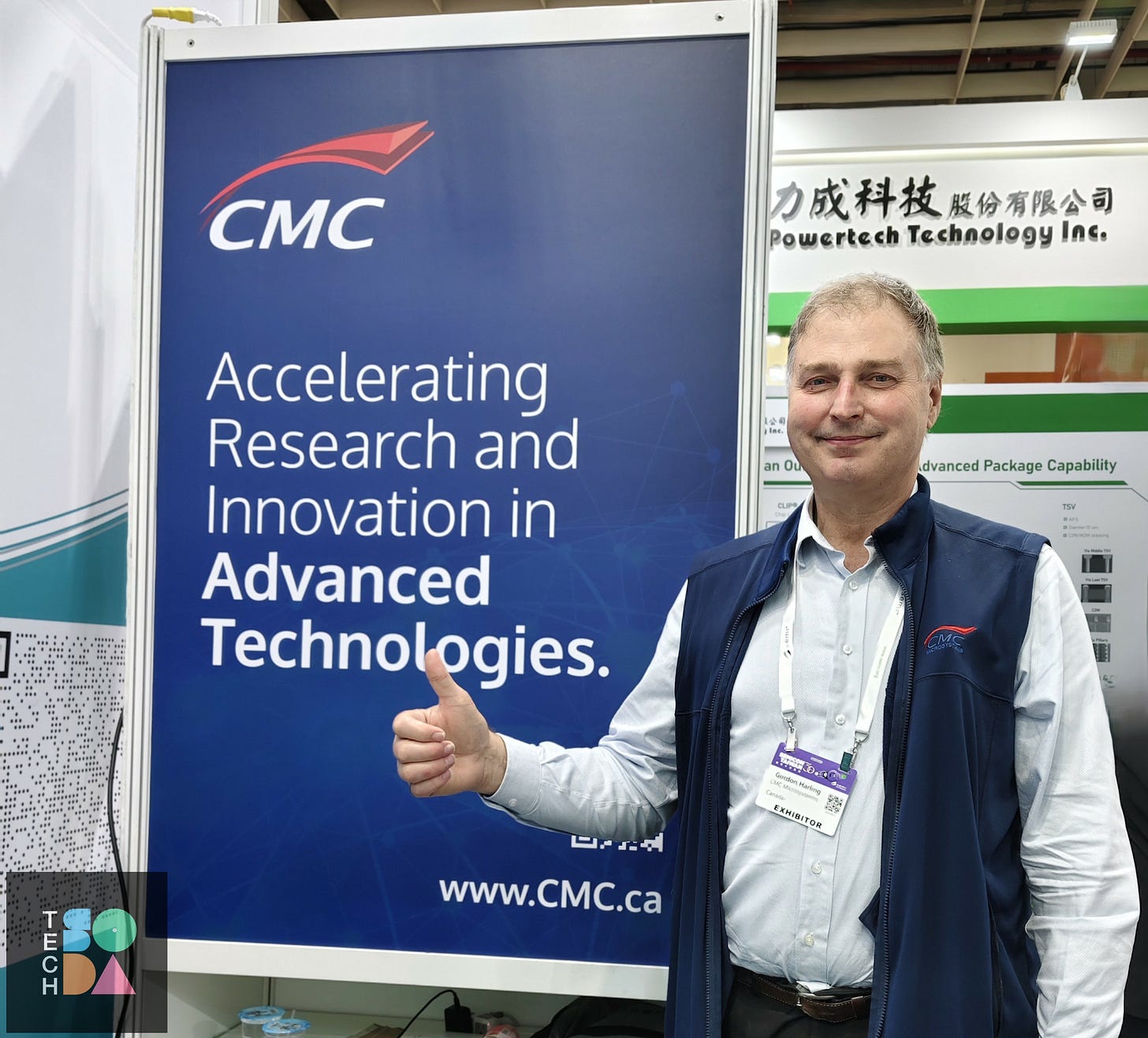Canada’s CMC Microsystems Carves Out Niche in Global Semiconductor Race
The Maple Country chooses to collaborate and coordinate, instead of competing head-to-head with big players, to make a greater global impact.
In an exclusive interview with TechSoda, Gordon Harling, President and CEO of CMC Microsystems, shared his vision for how Canada can build a strong foothold in the fast-evolving semiconductor industry. By zeroing in on high-growth, high-value niches, Harling believes CMC can position Canada as an indispensable contributor to global innovation—without competing head-on with the world’s biggest chipmakers.
Founded in 1984, CMC Microsystems is a Canadian not-for-profit organization with a mandate to accelerate research and innovation across advanced technologies, similar to Taiwan’s Industrial Technology Research Institute (ITRI). Its reach extends far beyond semiconductors into fields such as photonics, microelectromechanical systems (MEMS), the Internet of Things (IoT), artificial intelligence (AI), and quantum computing, encompassing both hardware and software. The organization’s mission is straightforward but ambitious: to reduce the cost and complexity of adopting new technologies by building and sharing platforms that make advanced tools and facilities accessible to universities, researchers, and startups alike.
Today, CMC supports a community of over 10,000 researchers and more than 1,200 companies in Canada and abroad. Its activities span subsidized access to state-of-the-art design software, coordination of prototype fabrication, training for highly qualified personnel, and long-term partnerships with suppliers and manufacturers. The result is a system that lowers barriers for new entrants while ensuring that Canadian innovators remain connected to international supply chains.
Harling extended an invitation to global semiconductor industry investors and experts, including those from Taiwan, to learn more at the upcoming FABrIC Innovation Symposium, scheduled for November 25-26 in Vancouver.
From Nortel-Era Origins to National Enabler
CMC began in the 1980s as an aggregator of academic chip designs at a time when Canadian researchers lacked affordable access to semiconductor tools. Over four decades, it has evolved into a key national enabler for advanced technology development.
The not-for-profit model is central to its success. By removing profit motives from its operations, CMC ensures that intellectual property remains in the hands of innovators. This approach has fostered a sense of trust among universities, startups, and companies that rely on CMC’s services.
“We have about 30 different CAD vendors who sell us licenses at very low prices,” Harling explained. “Today, we serve about 12,500 students with software and support over 400 unique prototypes each year.”
This structure, Harling argued, not only democratizes access to expensive design tools but also ensures that students and entrepreneurs gain real-world experience with the same platforms used by industry leaders.
Building the “FABrIC” of Canada’s Semiconductor Future
Looking ahead, one of CMC’s most significant undertakings is the Canadian government’s CAD 223 million, or NT$4.9 billion, “FABrIC initiative”, a five-year initiative designed to strengthen domestic manufacturing capabilities. Rather than compete with multi-billion-dollar silicon fabs in Asia, the U.S., or Europe, the program focuses on niche sectors where Canada has a chance to lead.
Harling identified compound semiconductors, photonics, MEMS, and superconductors as strategic growth areas. These markets, while smaller than mainstream silicon, are critical to emerging applications such as 5G networks, next-generation sensors, quantum devices, and high-performance computing.
“Canada doesn’t need to build the next TSMC,” Harling said. “We need to focus on areas where we have expertise, strong margins, and the potential to scale globally.”
Regional Clusters as Catalysts
Harling pointed to Canada’s regional clusters of expertise as another competitive advantage. Bromont, Quebec, is home to IBM Microelectronics, one of the largest outsourced semiconductor assembly and test facilities (OSAT) in North America, alongside Teledyne and the C2MI research center. Edmonton, Alberta, has developed world-class photonics and nanotechnology capabilities. Ottawa remains a hub for telecommunications and semiconductor research.
“These clusters create ecosystems where talent, suppliers, and institutions reinforce each other,” Harling noted. “They make it possible for Canada to punch above its weight in the global industry.”
Lessons from Taiwan
Asked about Taiwan’s role in global semiconductors, Harling was quick to acknowledge the island’s extraordinary speed and efficiency. “I am amazed at the speed at which Taiwan works,” he said, highlighting how Taiwanese engineers can take a device from fabrication to market in a matter of months.
While a direct collaboration in chip tape-outs with giants such as TSMC remains a challenge, Harling emphasized the potential for partnerships with Taiwan’s semiconductor community. By connecting Canadian researchers and companies with Taiwanese firms offering IP blocks, design services, and rapid prototyping, CMC hopes to create new pathways for innovation and market access.
This model could give Canadian startups a global platform while offering Taiwanese companies opportunities to expand into North America through CMC’s networks.
Talent as Canada’s Greatest Asset
Despite the global race to secure manufacturing capacity, Harling repeatedly returned to the importance of people as Canada’s strongest differentiator. With a highly educated workforce, robust university system, and immigration policies that attract global talent, Canada is well-positioned to solve some of the semiconductor industry’s most pressing problems.
Areas such as silicon photonics and co-packaged optics—technologies that enable faster, more energy-efficient data transfer—were highlighted as examples where Canadian expertise could be globally significant.
“We can help a lot on the brainpower side of things,” Harling concluded. “Canada has a diverse, highly skilled workforce that can take on some of the toughest challenges in the industry. That’s where our real advantage lies.”
A Strategic Niche in a Global Race
As countries worldwide race to secure supply chains and build domestic capacity, Canada faces the reality of its smaller market size and limited resources. Yet through organizations like CMC Microsystems, Canada is carving out a strategic niche. By leveraging talent, focusing on specialized technologies, and building international partnerships—including with Taiwan—Canada is confident that, instead of competing head-to-head with the largest players, by collaborating and coordinating with them, Canada will make a greater global impact.


